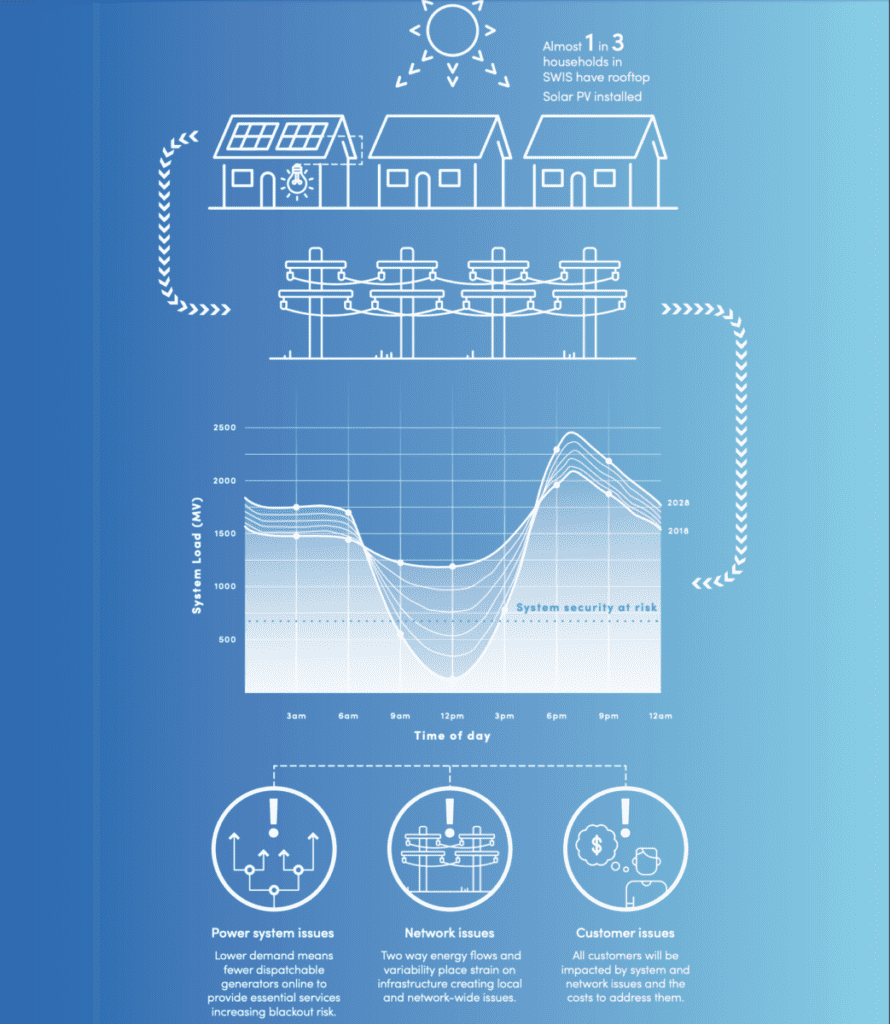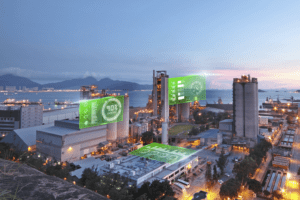While it may seem like curtailing solar production is counter intuitive to encouraging more renewable energy deployments, Western Power (WP), the state-owned utility in Western Australia is doing exactly that, while still having customers supply solar energy to the grid.
When less is really more.
There are over 275,000 solar panel systems on Western Australia rooftops with Perth suburbs, such as Southern River, Baldivis, and Canning Vale, reaching almost a 50 percent penetration, meaning 50 percent of the energy serving these neighborhoods at times comes from distributed solar. And it’s easy to see why; there’s plenty of sun in Western Australia. Low cost, carbon free energy is increasingly abundant.
But this availability of solar energy during low demand periods can lead to system load anomalies like over voltage events and other grid constraints, thus challenging the stability and security of the grid. Does this then mean discouraging solar energy production?
While it may seem like curtailing solar production is counter intuitive to encouraging more solar adoption, Western Power (WP), the state-owned utility in Western Australia is doing exactly that, and it is brilliant!
Many Western Power customers are not only consuming energy, but also supplying energy to the grid. However, changes are needed to manage this new two-way flow of energy to ensure the energy is safe, secure, and reliable for all grid customers.
Western Power is committed to a clean energy future, and by addressing these periods of low system loads, especially during weekends and holidays where the solar production is much higher than the consumption, they can provide grid stability and still encourage greater renewable penetration on the system.
To engage customers, WP created a pilot to secure 100MW of flexibility, asking businesses to curtail their solar production and increase some loads like HVAC systems, to provide network support, essentially reverse demand response. Increasing customer load helps to offset excess solar energy generation.
The ‘Why’ behind the flexibility pilot
As mentioned, the Western Australian (WA) energy system faces significant challenges in managing the two-way flow of energy between the grid and distributed rooftop solar.
On days when the temperatures are mild and the sky is clear, one in three WA households are generating energy from solar PV which is largely exported to the grid, because household demand doesn’t match generation during the middle of the day.
“When this occurs, it can result in variance between increasing supply and decreasing demand for energy”, known as a ‘system low’, which threatens stability of the network,” as pointed out in the 100MW Industry Challenge announcement
Unlike traditional DER or flexibility projects, the prime value, thus, is not in solving distribution network constraints, but in preserving system stability (frequency) by maintaining a minimal percentage of spinning generators online during low net load events to avoid blackouts.
“Currently rooftop solar PV across our network has the potential to contribute up to 45% of our system needs at certain times of day,” said Western Power CEO Ed Kalajzic in a statement.
“This project aims to demonstrate how both our customers and the network can realize value by using customer-owned distributed energy resources in balance with traditional network solutions”

Source: WA Energy Transformation Taskforce
The Action Plan
The intent of the Flexibility Services Pilot was to demonstrate that these flexibility services will help address network constraints including voltage issues, while enabling grid flexibility and allowing more renewable energy into the electricity grid.
To do this, they needed a platform enabling them to manage the overall program, notify their customers when they needed flexibility, verify performance, and calculate the incentives. They chose to partner with Schneider Electric for the software solutions and technological expertise.
Delivered through a flexibility services program, the pilot enables Western Australia businesses to manage their DER, such as solar PV, batteries, and manageable loads like heating and cooling systems, in return for compensation by Western Power.
The partnership with Schneider Electric, gave Western Power access to Energy Profiler Online, a proven software platform to manage the flexibility services which includes features such as participant portfolio management, user interfaces for program partners and contract management.
No time to waste
The program was implemented in a very short time frame, from concept in January 2020, to project award in April 2020 to deployment in September 2020. The implementation occured simultaneously with Western Power’s customer recruitment efforts; all being completed by September 2020. Schneider Electric worked with Western Power to implement the new program quickly and efficiently utilizing agile principles, including an open, inclusive communication and engagement approach between all parties. This included co-design sessions, clear communication materials, workshops and guiding the partners and their customers through their DER enablement journey.
The first of two initial control seasons concluded in November 2020. By working closely with partners, Western Power successfully increased load to help stabilize the grid during the few critical hours on weekends and holidays and learned a lot in the process.
What were the results?
Western Power and their partners recruited over 250 customers to participate in the program.
Western Power called 26 events between 26 September 2020 and 30 April 2021 and achieved, on average, 20MW of load flex. This is a significant amount considering that all the partners and customers were learning how to participate in this type of program for the first time – with no benchmarks.
Western Power has begun its journey towards a flexible grid that can meet customer needs and seamlessly connect and communicate with solar PV systems, batteries and flexible loads like heating and cooling systems to provide a safe, reliable and green energy grid using the smart technology of the Energy Profile Online software solution.

Number of participants and the kW achieved between Sep 5th and Nov 8th 2020
Note: As of the publication of this article the results from the second curtailment season are not available. This season included the addition of automated control making it easier for partners to participate and increase the predictability of the load flex. Stay tuned for updates on the upcoming results.




Conversation
Great article Jenny and great to see Western Power at teh forefront.
Great article 👏